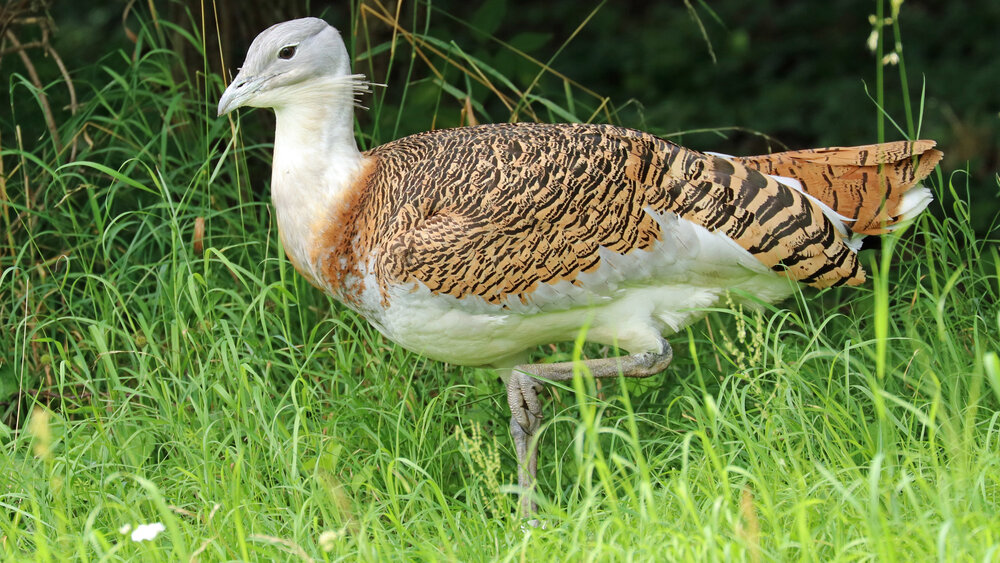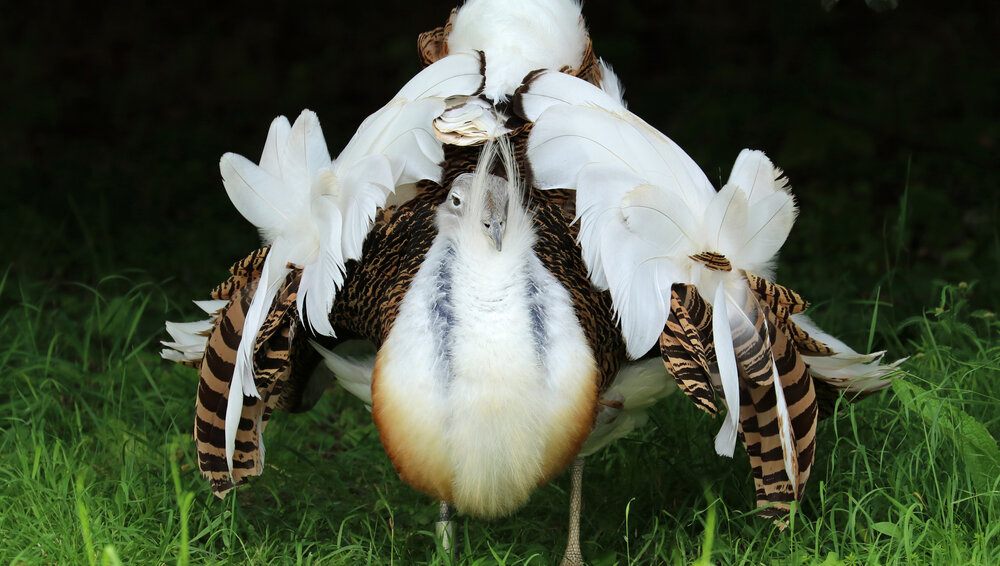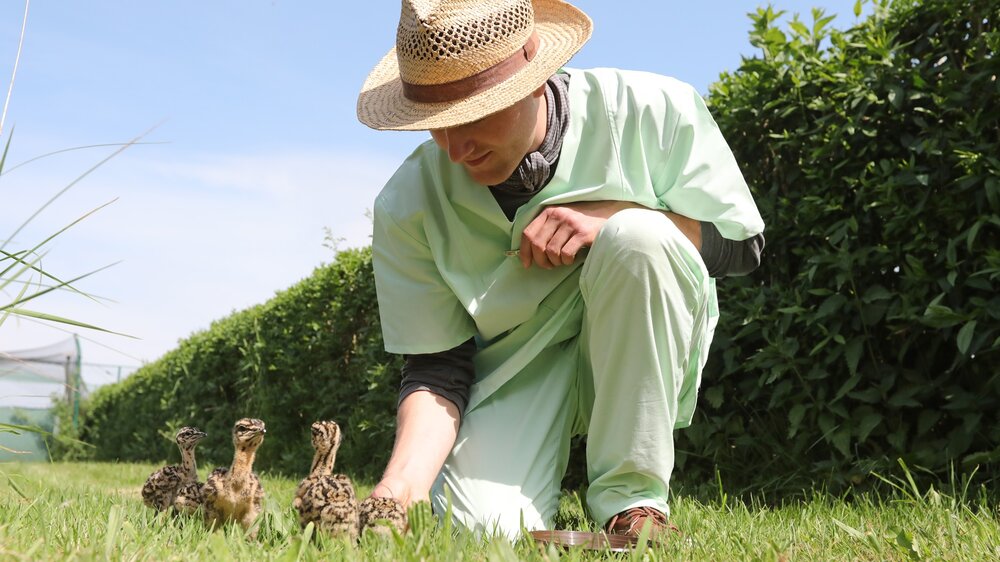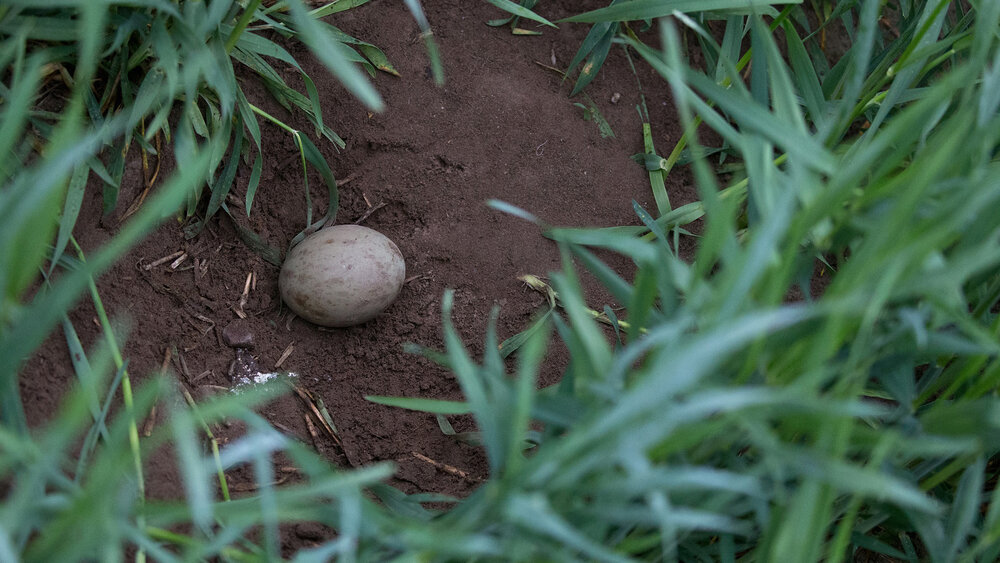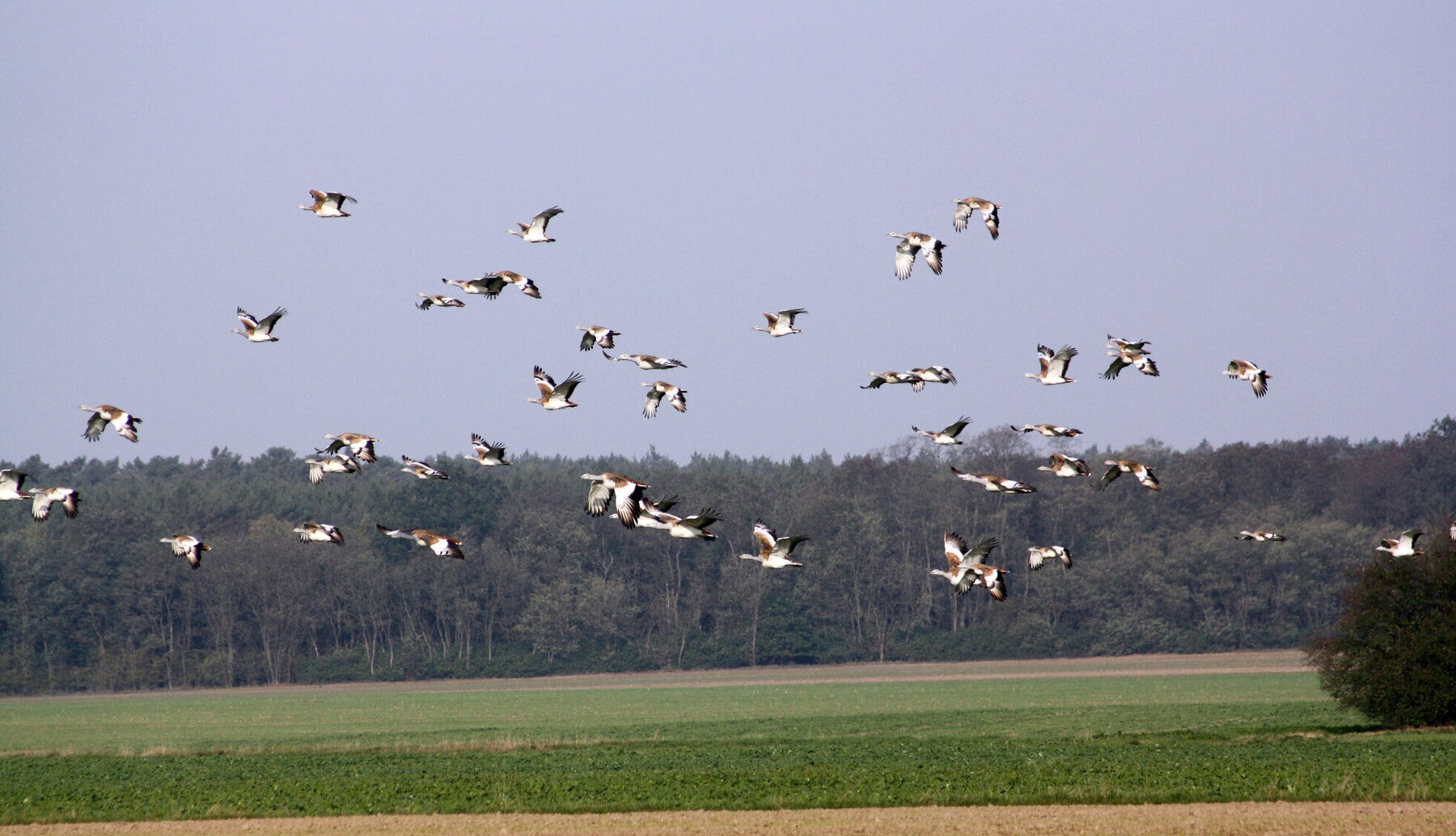
Great bustard
Tierpark Berlin is helping to protect and reintroduce great bustards in the German state of Brandenburg.
Project facts
- Project partner
Förderverein Großtrappenschutz
- Species
Great bustard (Otis tarda)
- IUCN threatened status
Vulnerable (VU)
- Project location
Germany
- Greatest threat
Habitat destruction as a result of intensive farming
- Response
Reintroducing hand-reared great bustards into the wild to stabilise the small populations in the German states of Brandenburg and Saxony-Anhalt
Threat Categories of IUCN


Great bustards at Tierpark Berlin
The great bustard is one of Europe’s largest – and one of the world’s heaviest – birds capable of flight. The cock and hen of this species vary in size more than any other kind of bird. Although great bustards are strong, untiring fliers, they spend a lot of their time walking around on the grasslands where they live. Since 2014, Tierpark Berlin has been home to three male great bustards. These birds function as ambassadors for their relatives living wild in Germany and Austria, which are currently threatened with extinction.
Great bustards in Germany
Great bustards could once be found throughout Europe. Their preferred habitats are grassland and fallow fields. Warm, dry summers offer the perfect conditions for the birds to raise their young, as that ensures there are plenty of insects for them to feed on. In the 1930s, around 4,000 great bustards lived in Germany, but those numbers have sunk drastically in the decades since. In 1995 just 55 great bustards were reported living in Germany.
Enemies all around
The main reason for the drop in numbers is massive habitat loss. Industrialised, intensive farming is increasingly robbing the birds of areas suitable for breeding, raising their chicks, and spending the winter. Great bustards are particularly under threat from the use of pesticides, the reduction in plant life variety as farms switch to monocultures, and intensive livestock farming. On top of that, construction of roads, electricity pylons and wind farms is devouring the birds’ living space. Predators such as the red fox, whose numbers are on the rise in Germany, pose another danger to great bustards and their chicks. As a result of these combined threats, the great bustard is endangered or already extinct in many European countries. Only in Spain and Hungary are there more substantial European populations of great bustards.
Conservation measures take effect
Great bustards have been saved from extinction in Germany thanks primarily to the Förderverein Großtrappenschutz. This friends association has undertaken intensive management of areas where the birds breed, raise their young, and spend the winter. It has also reintroduced hand-reared birds and erected predator-proof fences. The association focuses its activities in the German state of Brandenburg. As one of Germany’s least densely populated states, Brandenburg offers more suitable habitats than other states.
Back to nature
One of the most important conservation measures is stabilising populations in the wild by reintroducing artificially incubated, hand-reared birds from rescued egg clutches. Such intervention is still necessary, as the birds’ natural breeding rate is not yet adequate in important great bustard breeding sites such as the open lowlands of the Belziger Landschaftswiesen and the Fiener Bruch. Only in the Havelländisches Luch area are there currently sufficient numbers of full-fledged great bustards to ensure stable development of the species.
Tender loving care
Breeding and reintroducing great bustards is time-consuming work that requires plenty of helpers. Once the chicks have hatched, after an incubation period of around 24 days, they have to be hand-reared for eight to ten weeks before being taken to the release site. It then takes another three to four months for the young birds to successfully integrate into the wild bustard population. Although great bustards are a precocial species (the chicks are mobile from the moment of hatching), they are much more difficult to breed than, for example, Galliformes birds like pheasants and partridges.
Mum’s the greatest
The bond between great bustard mothers and their chicks is very strong and usually remains in place until the mating season the following spring. Chicks that grow up without a mother therefore need plenty of attention: they have to be fed by hand for several weeks before they learn to eat by themselves, and they need long walks every day to make sure they develop normally and can learn to negotiate their surroundings.
Support from Tierpark Berlin
Tierpark Berlin has been supporting the great bustard project since 2016. The funds it provides are used to hand-rear the young bustards so that they can be released into the wild in Brandenburg and bolster the existing populations. And the conservation measures are proving to be a success: by 2020 the German population of great bustards had risen to 337 individuals.
Photos: © T. Krumenacker und M. Putze/Förderverein Großtrappenschutz; Ruben Gralki/Zoo Berlin
